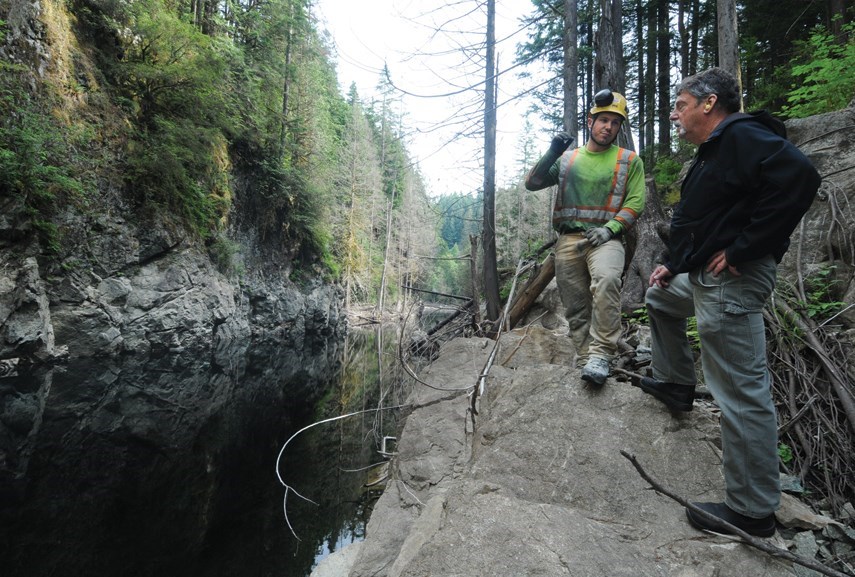Crews will be back out on the Seymour River this month, breaking rocks in the hot sun.
The Seymour Salmonid Society has been granted $80,000 from the Habitat Conservation Trust Foundation to clear more boulders from the 2014 Seymour River rock slide that choked the river off and made it impassible for salmonids.
Since the year after the slide, the Seymour Salmonid Society has been leading a restoration project along with the Squamish and Tsleil-Waututh Nations, the province, Fisheries and Oceans Canada, Metro Vancouver and the District of North Vancouver.
North Vancouver-based Northwest Hydraulic Consultants as well as BGC Engineering have been overseeing the project, while workers from Squamish-based Global Rope Access have been doing the on-site work of rappelling into the canyon to the house-sized boulders and using low velocity explosives to break them apart to open a fish channel.
In 2019, the society confirmed the first salmon and steelhead trout clearing the slide on their own. But, thanks to an unusually dry winter and low river flows, some of the larger rocks have become “locked together like a jigsaw puzzle. A handful of fish have been able to make it through but not enough to sustain the run.
“You always hope that Mother Nature plays nicely in the sandbox, but she didn't come through with any major water flows in the wintertime. So we didn't get what we'd expected,” society president Shaun Hollingsworth said. “It’s not good right now, so we need to build a passageway.”
Because of the extreme fire danger rating, work crews won’t be allowed to use any gas-powered tools or explosives. Instead, they’ll be using battery-powered drills on the rocks to allow them to get a wedge or expanding grout in.
“So it's all going to be done by hand,” Hollingsworth said. “They've got to break [the rocks] down into basketball size and then manually lift them and stack them on the side of the riverbank.”
The work is scheduled to start on Tuesday (Aug. 3) and last four to six weeks – before the next run of pink salmon start making their return.
Despite the setback, Hollingsworth said he’s “very optimistic” about the future of the project and the Seymour River itself.
The Salmonid Society is now in its third year of introducing coho salmon to the upper Seymour River above the existing dam and hatchery, allowing the species to spawn naturally for the first time in more than 100 years. It will be another year before they know how successful the project has been, but they are seeing some positive early signs.
“We are seeing wild juvenile fish so we know that these mature fish that we're putting in are able to spawn and reproduce, so this is all good news with regard to wild stocks,” he said. “Very, very successful.”
Northwest Hydraulics and Global Rope Access have also been hired by the Department of Fisheries and Oceans to carve a channel through the Big Bar landslide on the Fraser River – a much larger task that is also showing signs of success, Hollingsworth said.
“It’s nothing but good news,” he said.




